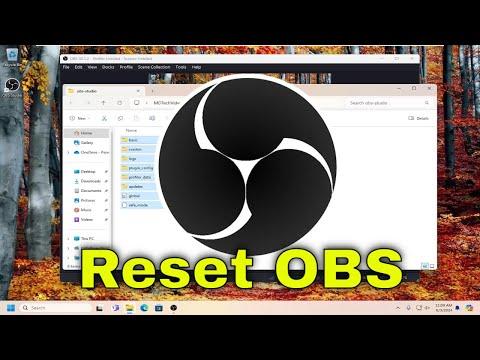To reset OBS Studio to its default settings, I first opened the application and navigated to the “File” menu in the top-left corner. From there, I selected “Settings” to access the configuration options. To delve deeper into the reset process, I needed to understand that resetting OBS Studio would revert all settings to their original defaults, which could be useful if the software had become unstable or if I wanted to start fresh.Once in the “Settings” window, I noticed that OBS Studio doesn’t offer a direct “Reset to Default” button. Instead, I realized I would have to manually reset the settings. To start, I went through each category in the settings menu—such as “General,” “Stream,” “Output,” “Audio,” “Video,” and “Hotkeys”—and took note of any custom configurations that I had applied. This step was crucial as it allowed me to revert each setting to its default state manually.For the “General” tab, I reset options like the UI language and system tray behavior to their default values. Moving on to the “Stream” tab, I cleared any custom streaming services or keys that I had configured. In the “Output” tab, I reverted the settings related to recording and streaming formats to their defaults. This included settings such as the recording quality, encoder settings, and bitrate.In the “Audio” tab, I reset the sample rates and device settings to their original defaults. The “Video” tab was another crucial area where I set the base and output resolution, as well as the FPS (frames per second) to the default values. For the “Hotkeys” tab, I cleared any custom key bindings I had set up, returning them to the default key assignments.Next, I closed the settings window and navigated to the OBS Studio configuration files on my computer. This was an important step for a complete reset. I located the configuration files typically found in the app’s user profile directory. On Windows, this is usually under %AppData%\obs-studio, and on macOS, it’s in ~/Library/Application Support/obs-studio. By removing these files, I ensured that OBS Studio would revert to its default settings the next time it started.To be thorough, I deleted the contents of the basic and plugin folders within the OBS Studio directory. The basic folder contains important settings and profiles, while the plugin folder houses any third-party extensions. Deleting these folders meant that OBS Studio would create new ones with default settings when it restarted.After deleting these folders, I restarted OBS Studio. On launch, OBS Studio automatically generated new configuration files and folders, essentially setting itself up as if it were a fresh installation. I was greeted with the default layout and settings, indicating that the reset was successful.To confirm the reset, I reviewed each settings category once more, ensuring that all custom configurations had been removed and default values were in place. This final check helped me ensure that the software was in its default state, ready for new configurations or to be set up afresh for my streaming or recording needs.In summary, resetting OBS Studio to its default settings involved manually reverting settings through the application’s menu, deleting configuration files and folders from the app’s directory, and restarting the software to initialize default settings. This process ensured that OBS Studio would function as if it had just been installed, providing a clean slate for new setups or troubleshooting issues.
How to Reset Your OBS Studio With Default Settings [Guide]
